Near the site of Grange Mill stood Papplewick Grange, a large mansion built for James Robinson and his family around 1780. The house also served as the Company Offices for the cotton spinning firm. The building survived the demolition of the Grange Mills and was occupied by several different tenants during the 19th century. It was finally pulled down in 1932. ‘Papplewick Lido’, a leisure complex with a swimming pool and social club, was built in the grounds of the Grange. The ‘lido’ itself was demolished in 1995, and modern houses have now been built on the site.
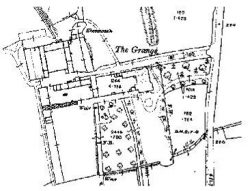
This map, extracted from the OS 25″ plan (sheet 33.5) shows Papplewick Grange in 1915. The track north of the house leads to Grange Farm. North of the track is the site of Grange Mills and the end of the leat leading from Moor Pond. South of the house is the carriage drive leading to Moor Road. The Grange gatehouse was added after this map was published in 1915. It still stands on Moor Road alongside the large stone gateposts which flanked the drive.
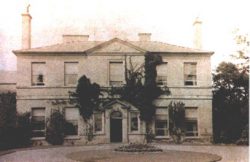
This is a view of the southern facade of Papplewick Grange, taken in about 1890. At that time it was the home of a Nottingham solicitor called Jesse Hind.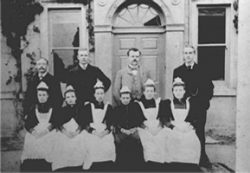
This is a picture of some of the staff of the Grange, taken in about 1890.
Do you know who any of these people were ?
Please let me know.
 This is a picture of more of the staff of the Grange, taken in about 1890.
This is a picture of more of the staff of the Grange, taken in about 1890.
Do you know who any of these people were ?
Please let me know.
In 1891, the census listed the residents of Papplewick Grange. They were the family of Jesse Hind, and some of their servants.
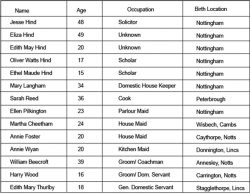
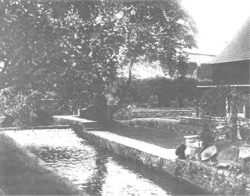 This view shows the weir across the R. Leen, where it passed through the grounds of the Papplewick Grange. The house appears in the right (rear) of the picture. On the right is the indoor badminton court built by Julien Cahn when he lived here. In due course, this became the site of ‘Papplewick Lido’.
This view shows the weir across the R. Leen, where it passed through the grounds of the Papplewick Grange. The house appears in the right (rear) of the picture. On the right is the indoor badminton court built by Julien Cahn when he lived here. In due course, this became the site of ‘Papplewick Lido’.